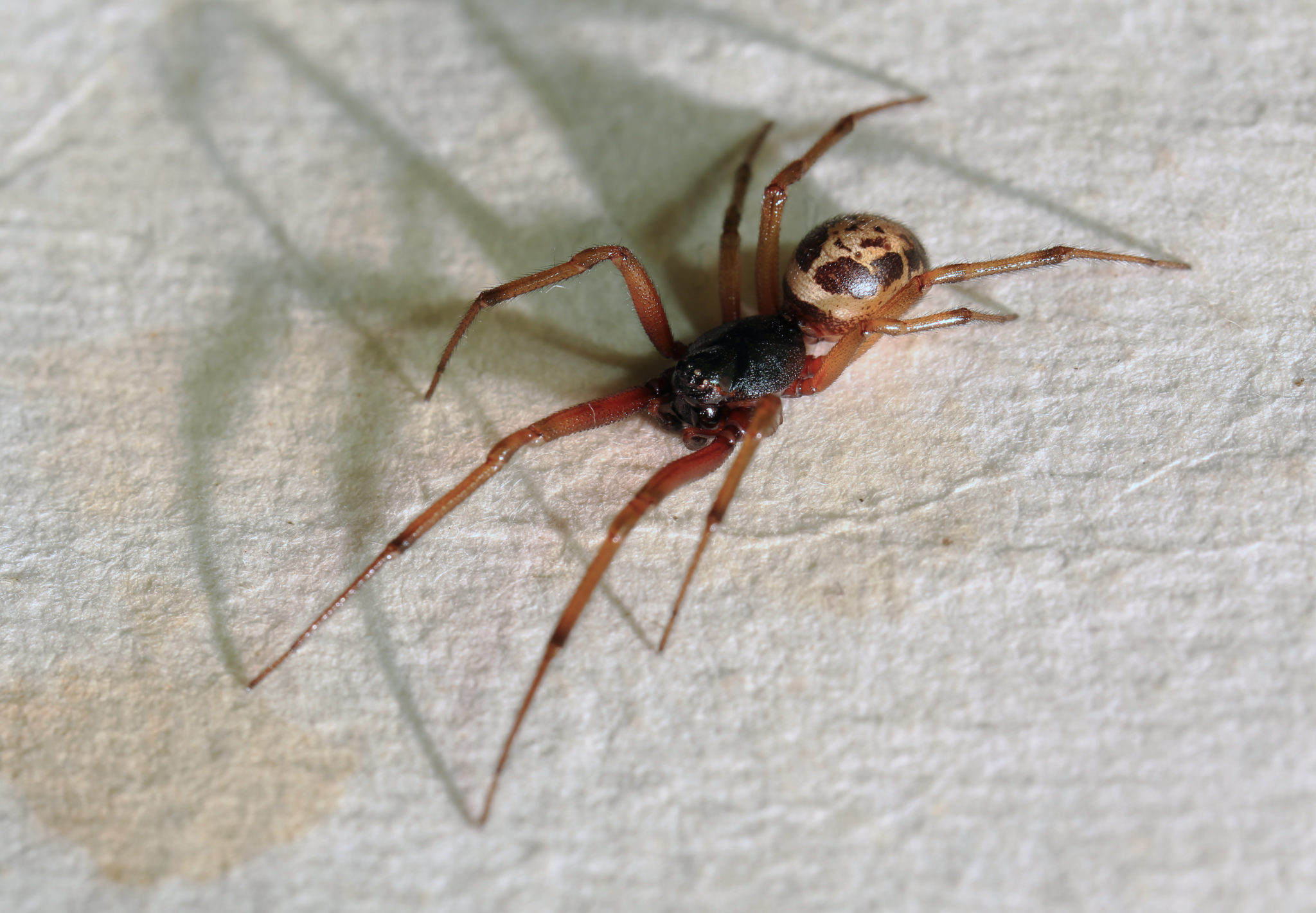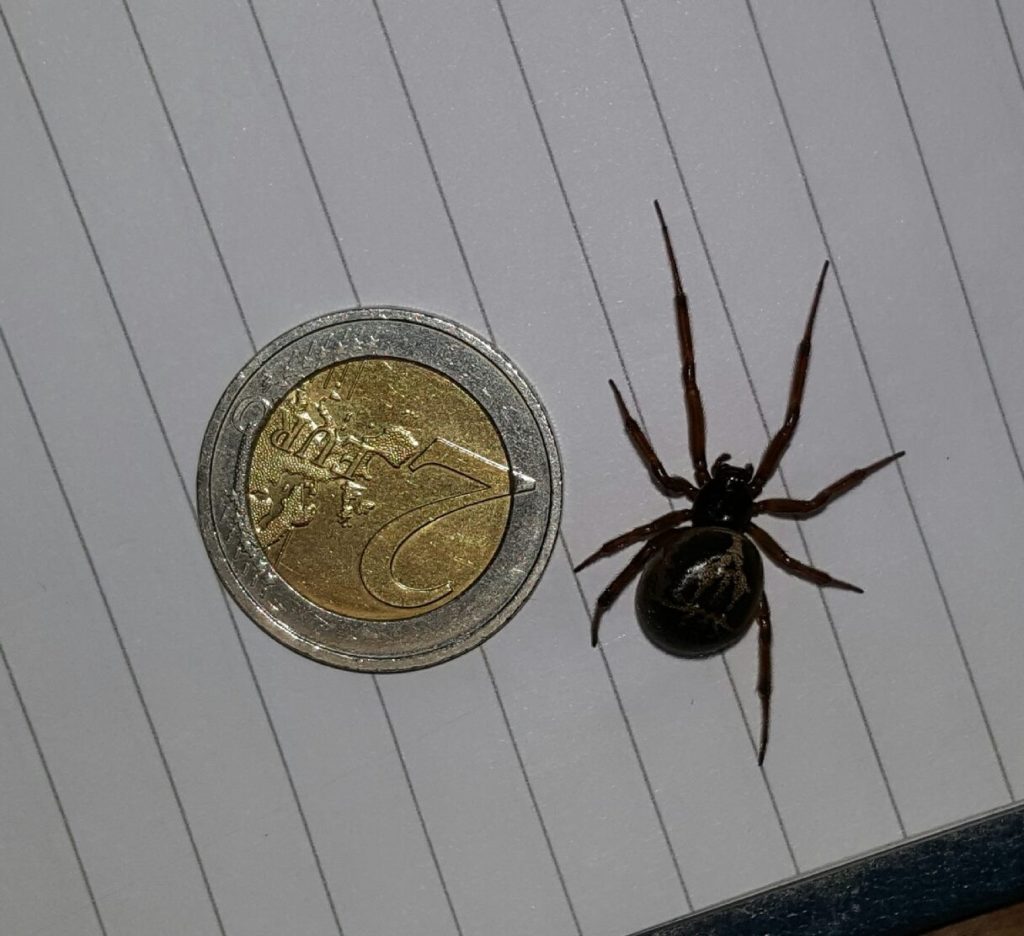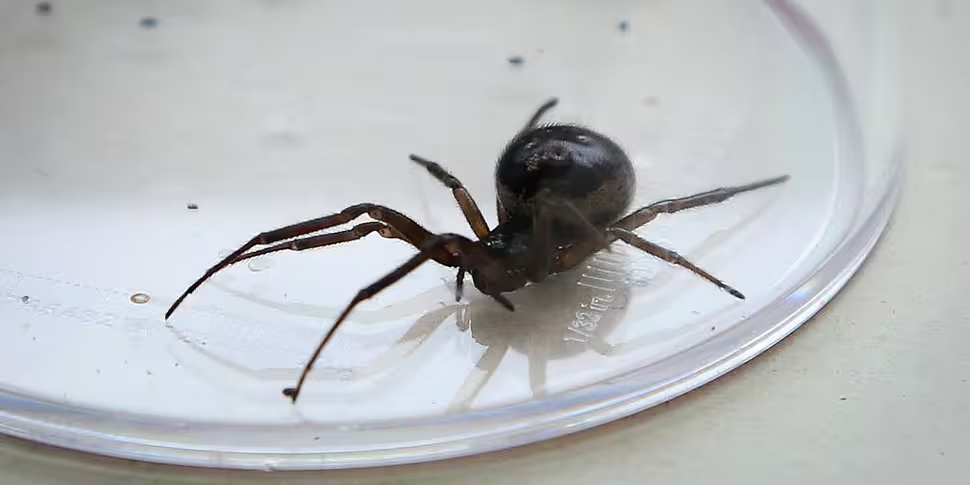Bites from the venomous Noble False Widow spider are “undoubtedly” becoming far more common in Ireland – with some victims left needing hospital treatment.
The spiders are originally from Madeira and the Canary Islands and have spread right across Ireland since they were first detected here in the 1990s.
A new study from researchers at NUI Galway has found that spider shares two-thirds of the toxins in its venom with the infamous Black Widow.
On Lunchtime Live this afternoon, NUIG lecturer Dr Michel Dugon said the spiders have become far more common in recent years.
“They are becoming very prevalent in suburban and urban habitats,” he said.
“So, five years ago when we would have to catch a false widow spider, we would have to look for quite a while.
“Now if any of my students need to catch 100 or 150 noble false widows that can be done easily in two or three hours in most housing estates around Dublin.”
 The Noble False Widow. Image: Wiki
The Noble False Widow. Image: WikiHe said this latest study recorded the symptoms and experiences of 16 people who were bitten by the Noble False Widow.
“We have actually found out that the Noble False Widow is capable of medically significant symptoms,” he said.
“For most people, it will be limited to pain and swelling around the bite site, but for a minority of people, we are actually talking about systemic symptoms. So, symptoms that actually will take over the whole body.
“Those patients experience excessive sweating, headache, tremors, they also have tachycardia – so the heart was not beating regularly – or they had difficulty breathing so, we are speaking about fairly serious symptoms.
“In very rare minorities we also had very serious skin conditions that require hospitalisation and treatments over several days, weeks or even months.”
He said Noble False Widows have “really made our homes their homes as well” and said people are generally bitten while they are asleep or just after they wake up.
“The spider is not out there to bite you,” he said. “It is not aggressive in any way. But it will move around, particularly at night, and sometimes they find their way into your bed.
“Then your roll over in your bed when you are sleeping and you squash the spider. The spider of course is scared and then will bite.
“Or, the spider decides to hide in your clothes, you put your clothes on in the morning after waking up, the spider is trapped between the clothes and the skin and once again it will bite in defence.”

They are most often found in bedrooms, kitchens, bathrooms or sheds.
“You are looking for a spider that is about the size of a €2 coin,” he said.
“So, it is fairly big by Irish standards but it is not enormously so. It has a very peculiar appearance – It is completely black with a round bulbous abdomen.
“Its abdomen bears some marks on the dorsal side – so on its back. Those marks are white or cream in colour and some people think they look like a hectogon and some people see a skull. So, it is quite peculiar … something actually you would notice quite easily if you saw it.”
He said scientists are still not sure what has made the Noble False Widow so successful in Ireland – noting that it may be because we don’t experience harsh winters or because of a genetic variation that helped them adapt to the Irish climate.
They are classed as an invasive species and have managed to displace the native spiders people would have normally encountered before their arrival.
You can listen back here:









